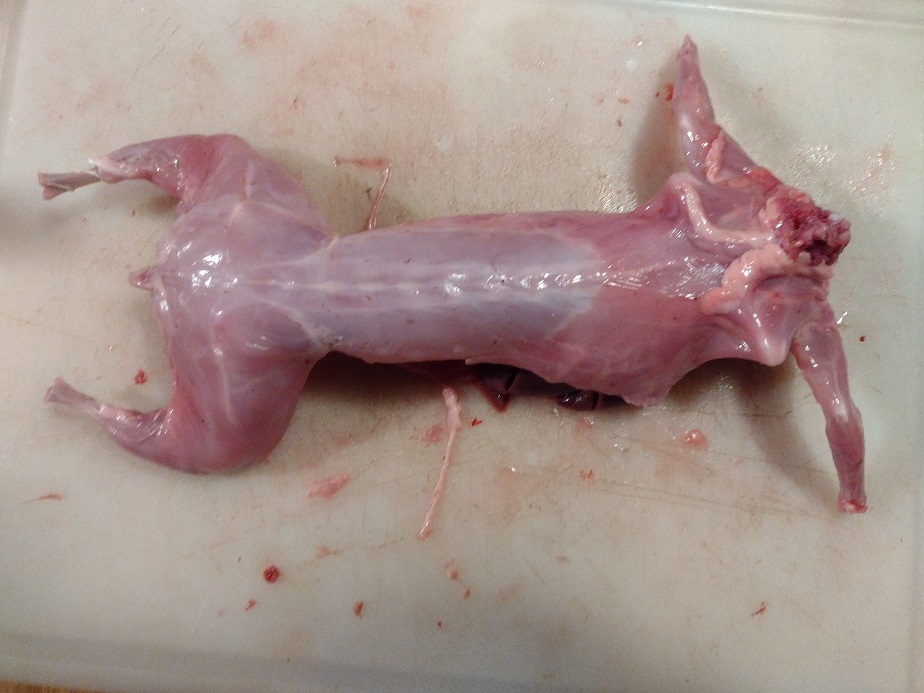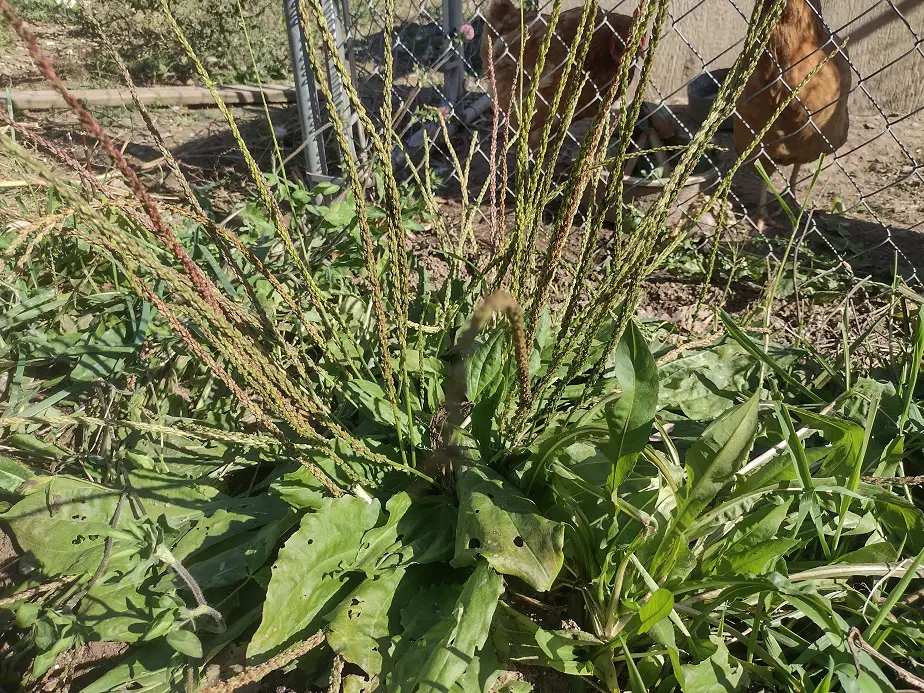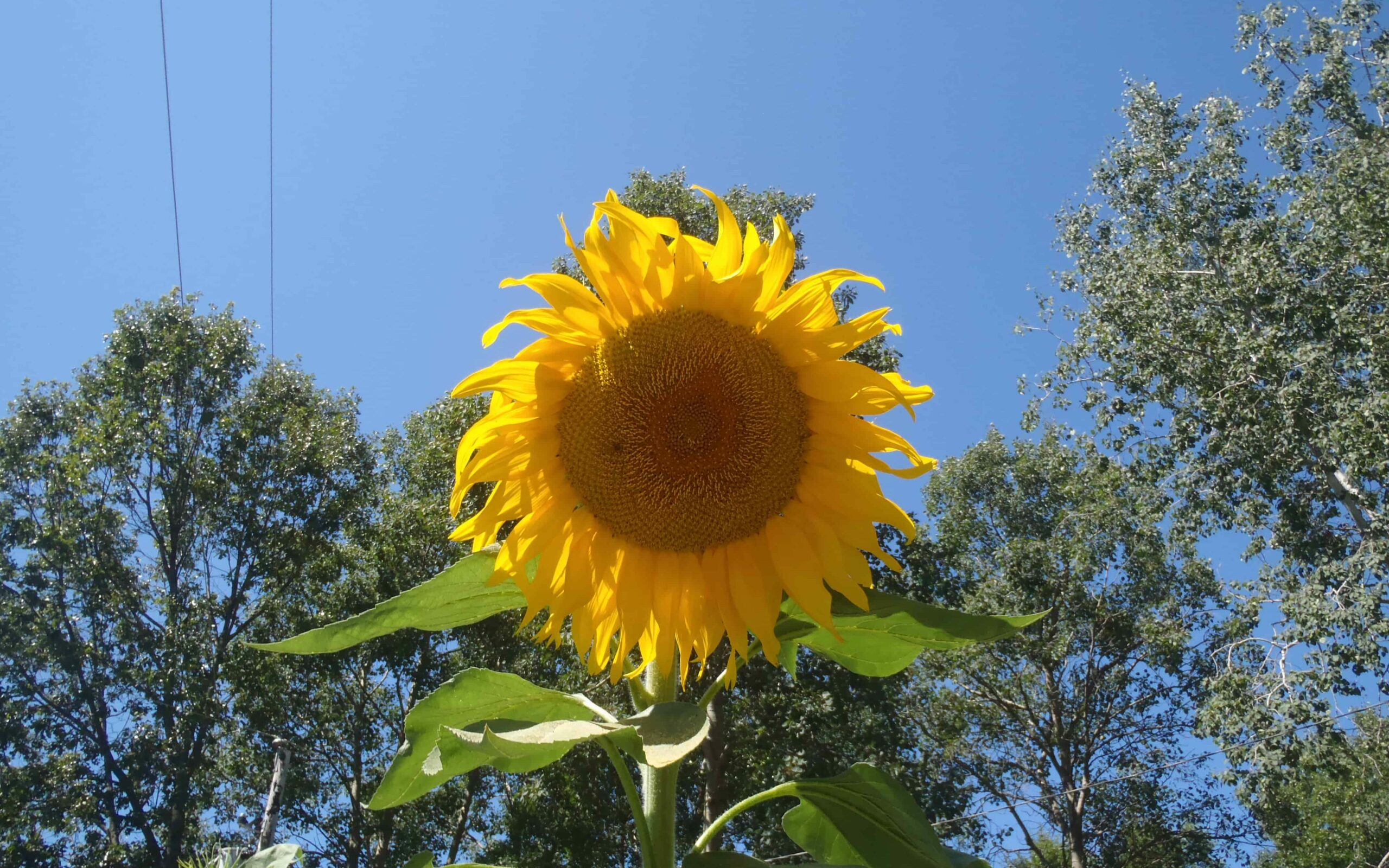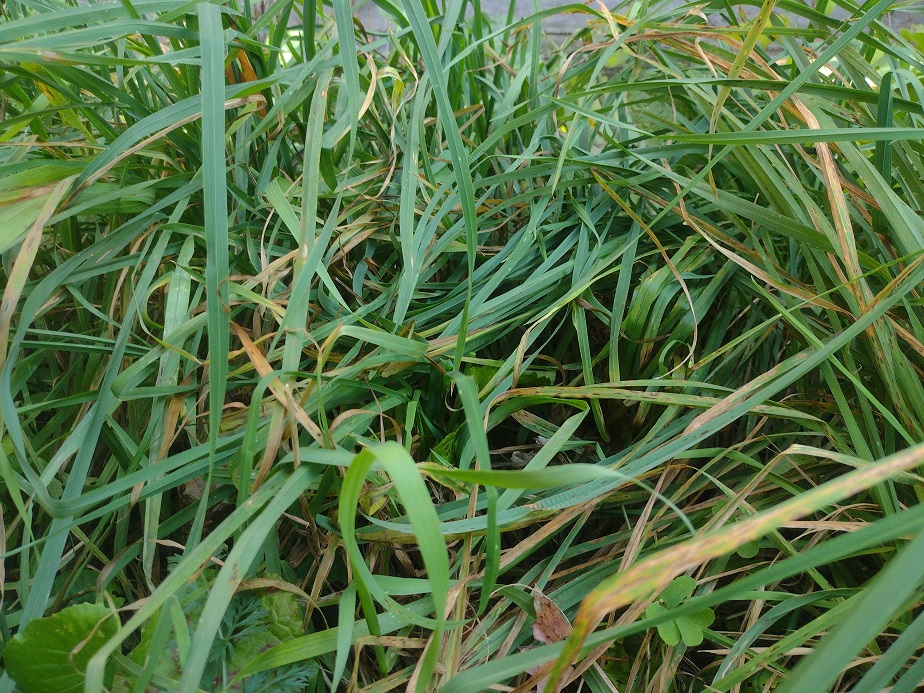I’ve raised rabbits on grass alone. It worked, but it wasn’t what I had hoped.
A rabbit can be raised on just grass, but it’s not an optimal diet for early growth. Grass-fed rabbits tend to be half-sized at butcher time. Although grass is full of essential vitamins and minerals, most grass has only half the protein that rabbits need to reach a decent butcher weight. High-protein plants are better.
Growth is one aspect, but what about cost and simplicity? There are pros and cons to raising rabbits on grass, or other fodders. Let’s dive into it.
Raising Gras-Fed Rabbits
Grass-fed rabbits tend to be very healthy overall. Grasses contain a good assortment of the vitamins and minerals rabbits need to do well, and they re in a much more useable, form than the synthetic vitamin supplements added to rabbit pellets. Naturally occurring vitamins are much more bioavailable.
That’s why, even if you don’t want grass-fed rabbits, I recommend you give a little every day or so to keep them in good health. Fresh grass, and other plants, help maintain good digestion in rabbits. fresh, wild, unwashed plants have a good assortment of gut-benefiting bacteria. All good things.
Another thing to note is that meat from grass-fed rabbits is higher omega-3 fatty acids but lower overall in fat. This has been documented several times, including in this research report from 2006
Rabbits can also live on hay, but hay is more devoid of nutrients than fresh plant matter. After drying, some of the compounds in plant material start to break down and deteriorate. The first thing to go is vitamin content. Some vitamins are largely lost in the first 48 hours after being cut.
As the chlorophyll breaks down and the hay goes from vibrant green to yellow-green, to almost a brown, well over half the vitamin content has been depleted. Protein also is reduced as grass turns to hay. So, if you start with low-protein grass and make it into hay, it’s going to be pretty poor for rabbits.
If you plan to feed your rabbits a lot of hay, you better make sure it’s a high-protein hay crop like alfalfa. In a more self-sufficient system, like we’re working towards, hay is ultimately a part of our plan for winter feed. One of the things we’ve been experimenting with is making hay from sunflower leaves.
Sunflower leaves are around 20 or 22 percent protein fresh, and closer to 18 percent when dried and stored. Chickory and burdock leaves have similar protein levels. These are all high in vitamins and minerals. Comfrey is another good one. Next spring, I want to plant a patch of alfalfa.
Alfalfa is a really good crop fresh or in hay for rabbits. It’s high in protein, vitamins, and minerals. Alfalfa is exceptionally high in calcium, which helps nursing does and growing bunnies. I’ve bought alfalfa hay for winter rabbit feed, but couldn’t get one that was very pure. There was a lot of grass in it.
When I raised rabbits on grass, hay, or other wild fodder, the results were similar every time; smaller rabbits at butcher time. My goal weight is a 2 1/2-pound carcass from a 12-week-old rabbit.

How Big do Meat Rabbits Get?
Here’s a chart of the growth and yield results I’ve seen on various feed types. These rabbits all came from the same breeding pair.
| Feed type | Live weight | Carcass size | Age | Meat per litter |
| only grass | 1 lb. 10 oz | 13 oz | 12 weeks | 6-1/2 lbs. |
| *random browse mix | 2 lbs. | 1 lb. | 12 weeks | 8 lbs. |
| mostly grass, some clover | 2 lbs. 6 oz | 1 lbs. 2 oz | 12 weeks | 9 lbs. |
| Alfalfa hay (50-50 grass alfalfa) | 3 lbs. | 1 lb. 8 oz | 12 weeks | 12 lbs. |
| Mostly clover, some grass | 3 lbs 7 oz | 1 lb. 13 0z | 12 weeks | 14-1/2 lbs. |
| Mostly chickory, some grass | 3 lbs. 5 oz | 1 lb. 13 oz | 12 weeks | 14-1/2 lbs. |
| Mostly high-protein tree leaves, some grass | 4 lbs. | 2 lbs | 12 weeks | 16 lbs. |
| Mosty burdock leaves, some grass | 4 lbs. | 2 lbs | 12 weeks | 16 lbs. |
| cheap, local brand pellets (16 percent protein) | 5 lbs | 2 lbs. 9 oz | 12 weeks | 20-1/2 lbs. |
Over time, you can select rabbits from your stock that do better on a particular feeding ,ethod and end up with significntly better results. That’s not what I did here. I was just looking for a a straight-up comparison with my rabbits. Other breeder’s results will likely vary a bit.
Now, I have recently noticed much better results when giving grain (corn or oats) along with high-protein fodder. The extra xcalorioes seem to be well-utalized by the growing bunnies. I’ll have to keep a closer eye on it next time around. The pelets also contain corn for added energy.
The pellets outpreformed all the options I’ve tried. But, that’s something I have to buy. Right now, it’s $16 for a 40 pound bag, which comes to 40 cents a pound. It takes about 100 pounds to feed the mother and bunnies from breeding to weaning. It costs me $40 per litter to raise rabbits on cheap pellets.
A decent litter of say, 8 bunnies that all yield 2-1/2 pounds of meat totals 20 pounds. That’s $2/lb. Currently, if I hit up the supermarket sales, I can get meat cheaper than that. One of my big goals is to run a low-cost operation that both saves money and manages more self-sufficlently.
Some people use the more expensive, higher end feed options. Some of the good ones are twice the cost I pay. I’ve seen others get up to 30 percent more growth (with the right rabbit genetics) on the really high end feed. But, it it worth it to double costs for 20 or 30 percent more meat? I don’t think so.
Thers’s no need to pay $3 or $4 a pound for your owm rabbits. This doesn’t have to be a rich man’s sport. The biggest varriance in the chart above is protein of the feed. For the most part, as you go down the list, the protein of the feed increases. But, you have to balance that with good nutrition. That’s usually tricky.
It takes some work to get good results. Trial and error is needed for that sort of thing.

High-Protein Crops for Rabbits
- Alfalfa
- Clover
- Chickory
- Dandelion
- Dock (burdock and bloody dock for sure)
- Plantain (both broadleaf and longleaf varieties)
- Sunflower leaves
- Comfrey
High-Protein Tree Leaves
- Mulberry
- Beech
- Ash
- Alder
- Poplar (cottonwood)
- Aspen
- Birch
- Lime
- Hazle

Best Crop to Grow for Rabbit Feed
Grains
- Corn
- Oats
- Sunflower seed
- Wheat
- Barley
- Rye
- Buckwheat
Vegetbles
- Beet (sugar, mangel, garden varieties)
- Chard
- Kale
- peas
- beans
- pumpkin/squash
- Head lettuce
Grains and/or srarchy vegetables are important to kee up the energy levels in fast-growing comercial rabbit breeds. To see more about growing or harvesting wild feed for rabbits, Check out these related articles.
Relatred Articles:


Very informative. Thanks.